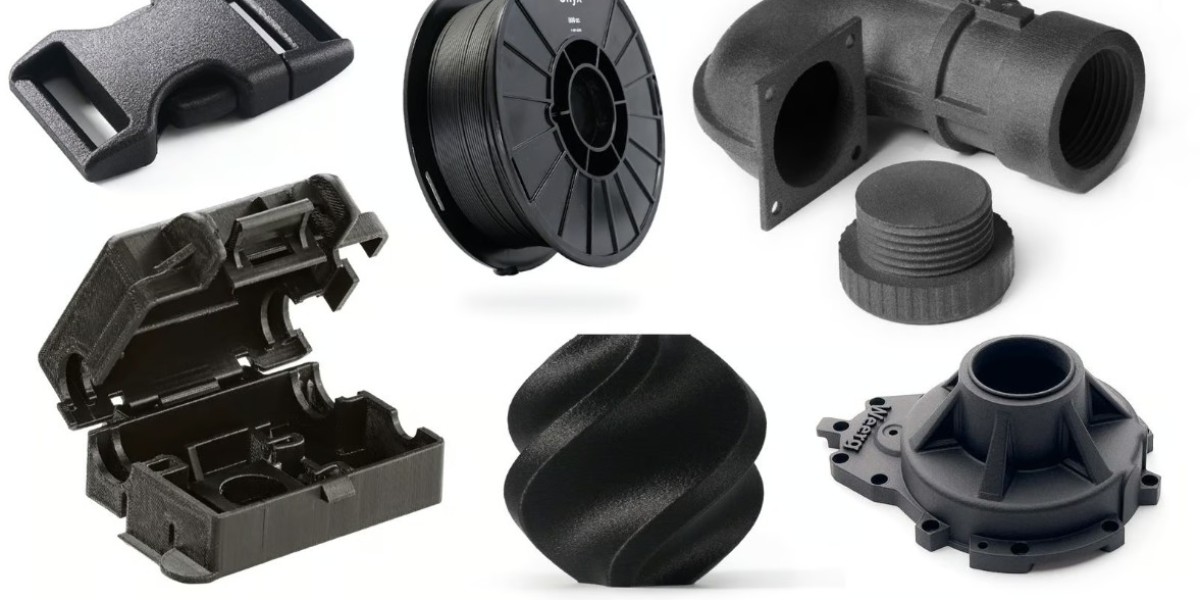For makers and engineers ready to move beyond breakable, basic PLA prints, nylon is the ideal next step. Although PLA is typically less expensive and often easier to use, nylon offers excellent impact resistance, wear tolerance, and long-term durability — perfect for end-use parts, gears, hinges, brackets, and mechanical components.
As 3D printer capabilities improve — with better hot ends, enclosed chambers with better temperature control, and humidity-controlled filament stations — it’s easier to avoid the challenges that one plagued printing with nylon, like warping and moisture issues. Nylon has become more accessible. It unlocks a new level of performance that PLA simply can’t match, whether you’re building functional prototypes or end-use spare parts.
One problem, though, is that there are a lot of different types of nylon, technically known as polyamide (PA). There are more types of nylon than types of PLA, from sustainable-ish bio-based nylons made of castor oil on one end of the nylon spectrum to fossil-fuel-based nylons on the other. You can embed nylon with glass fibers, carbon fibers, and Kevlar. There’s specially formulated high-temperature nylon and even recycled nylon from commercial products, including discarded fishing nets. There’s PA6, PA6/66, PA11, and PA12, ranging in price from $30 a kg to more than $200.here are some of our top picks, from budget to performance staple to engineering grade. Helping you choose the right Nylon 3D printing filament.
What Sets Nylons Apart
If you’re shopping around for nylon filament, every product description will end up sounding about the same. All brands say that their nylon has low warping and great layer adhesion; that it exhibits good resistance to oils, fuels, and lubricants; that it has a high impact strength and good mechanical properties; and parts 3D printed are strong, durable, and shows good resistance to wear and abrasion. These are the standard attributes for all nylons.
What sets them apart may just be the quality of the manufacturing and the type of polymer blend, which results in consistency spool after spool. Your nylon isn’t just pure nylon, there are additives (typically a proprietary formula) to boost performance, thermal behavior, moisture resistance, and other attributes.
Nylon Basics
- Strongest/Stiffest: CoPA6/66
- Most Tough/Flexible: PA11
- Most Dimensionally Stable: PA12
- Most Affected by Moisture: PA6
Carbon fibers in nylon boost strength and stiffness, but lower flexibility.
Glass fibers in nylon boost strength, stiffness, and impact resistance.
Kevlar fibers in nylon boost impact resistance and resistance to wear over time.
Although a decent 1kg-spool of PLA could start at about $20, don’t expect to take home a 1kg-spool of nylon for any less than $30. Nylon PA6 tends to be the most affordable, followed by PA6/66, PA11, PA12, then the composite varieties, such as carbon fiber infused or kevlar infused.
Regardless of price, always opt for a filament that comes with a technical data sheet and specific print parameters, which may only be a starting point depending on your FDM 3D printer.
eSun ePA Nylon
The eSun ePA Nylon filaments come in a light, natural color and a clear version. The light is ideal for painting, while the clear is for those times when you need something more temperature resistant and wear resistant than PETG or PA. It’s also flame retardant, with a level of UL94-V2. For first layer adhesion, a first-layer print speed of 10 mm/s works well with a PVA glue stick on the bed surface. For larger models, it’s recommended that you use a thicker brim as well as increase the flow rate since this filament tends to warp more than others.
It’s another nylon 6/66 copolymer with an elongation at break of up to 175%, which can print strong and durable parts with high fracture resistance. eSun also makes nylon in black, high temp, and carbon fiber.
FormFutura Styx PA6
Styx PA6 is an easier to 3D print nylon filament compared to many PA6 filaments. It’s a monofilament (not a blend) manufactured in the EU. We’ve found that it offers a good balance of strength, durability, and printability, for the price, making it suitable for any type of functional part.
It possesses good electrical insulating properties, which makes it good for electrically insulating parts, such as housing for any type of electronic.
FormFutura makes two other types of Styx nylon, a PA6-GF30 and a PA6-CF15.
UltiMaker Nylon CF Slide
This is a new nylon composite filament just launched by UltiMaker this year. It’s a unique nylon copolymer PA6/12 with carbon fiber offering wear resistance and temperature resistance of up to 180°C. It’s called “slide” because of its low friction and high wear resistance formula, ideal for parts involving sliding contact with other materials, such as stainless steel. After annealing, the filament can withstand temperatures up to 180°C, suitable for high-temperature applications.
Of course, UltiMaker filaments only come in 2.85 mm diameter, which limits their applicability.
Printing & Storage
Nylon used to be quite a challenging material to print with, but manufacturers have made it much more approachable in recent years. While you shouldn’t expect it to print as easily as PLA or PETG, printability shouldn’t be a deal-breaker for entry.
- Nozzle temperature: varies by brand
- Bed temperature: varies by brand
- Recommended print beds: Garolite, textured PEI sheets (may require adhesives), glass with glue stick or adhesive, magnetic flexible plates with nylon-compatible coatings like Magigoo PA
- Not recommended print beds: bare glass, Smooth PEI without adhesives, tape, unheaded beds
- Avg. Print speed: 25-50 mm/s
- Fan speed: 0-50%
- Enclosure: Recommended
Nylon filament can be a little bit challenging to print due to its tendency to warp. The best surfaces that you can use are Garolite sheets and glass sheets. PEI usually doesn’t stick well to PA. To obtain the best results, you should use a PVA glue stick on the build plate to avoid warping, especially on small features and corners.
You should also remember that bed temperature is crucial for good adhesion with this material. Try setting it to 70 °C and work your way up to 90 °C if the filament refuses to stick to the plate.
While these general settings should serve you well, materials vary by manufacturer. Before printing anything, it’s always a good idea to check the recommended settings.
Dry Storage
Proper storage for nylon is critical. The variants used in 3D printing are extremely hygroscopic, meaning they absorb moisture. This moisture degrades the material and yields poor print quality and strength.
To avoid wet filament problems, store your filament in a dry environment.
Since nylon can go bad in even a few hours, we also recommend printing directly from a humidity-controlled container. This could be a dry box with a filament feed hole or a humidity-controlled spool holder.
Should your nylon pick up some moisture, you’ll want to dry your filament.







